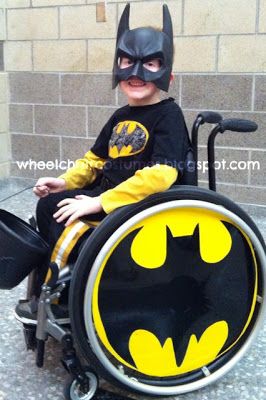Halloween is that one day of the year when we can be someone else and people rejoice and give us treats! But, Halloween costumes and activities can get a little “spooky” for individuals with disabilities. Let’s make Halloween inclusive for children with disabilities, and build better communities where no one is left out.
Halloween can be a scary time, particularly to those with anxieties. Investigate this site if your child is tentative about Halloween activities.
Some kids with sensory issues can’t wear scratchy costumes or tolerate makeup. Check out these sensory friendly costumes.
Magic Wheelchair is a nonprofit organization that makes epic costumes for children in wheelchairs. Ryan and Lana Weimer, the founders of Magic Wheelchair, and their helpful volunteers, create costumes for children with disabilities!
Prepare your homes and attitudes for all children to access Halloween fun and favors.
- If your house has steps, set up a chair at the bottom of your steps, and sit on that when you disperse treats to children. This will accommodate the wheelchair users, and those with difficulty climbing stairs.
- Some children are unable to eat by mouth, and others may have sensory issues with food, while others may have strictly controlled diets. Have some non-edible “treats” on hand for these trick or treaters.
- Consider limiting any flashing lights or loud noises with outside Halloween decorations. Children with epilepsy or sensory issues may have difficulty with that.
- Don’t insist that the children say “Trick or treat.” Some kids with disabilities can’t talk, or have difficulty processing fast enough to respond in a timely fashion.
- Don’t single out children with disabilities. Just admire ALL the kids and their costumes!
- Distribute informational cards to homes in the neighborhood, regarding the visitors with disabilities that might be trick or treating on Halloween.

